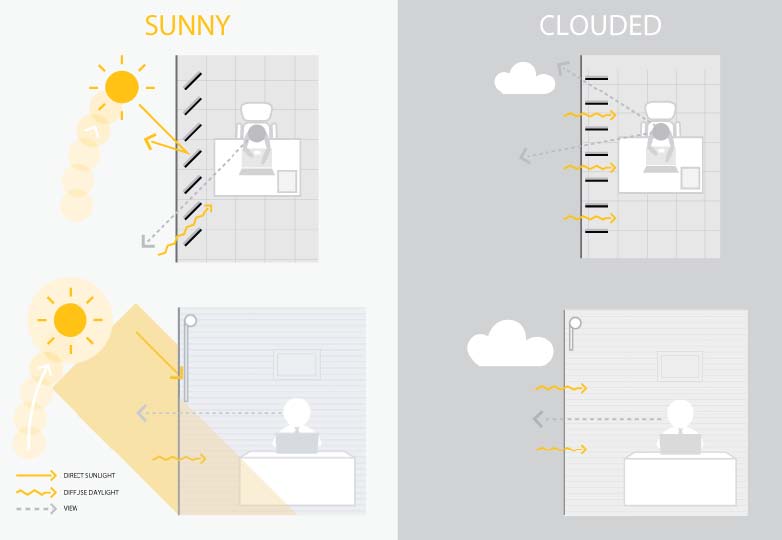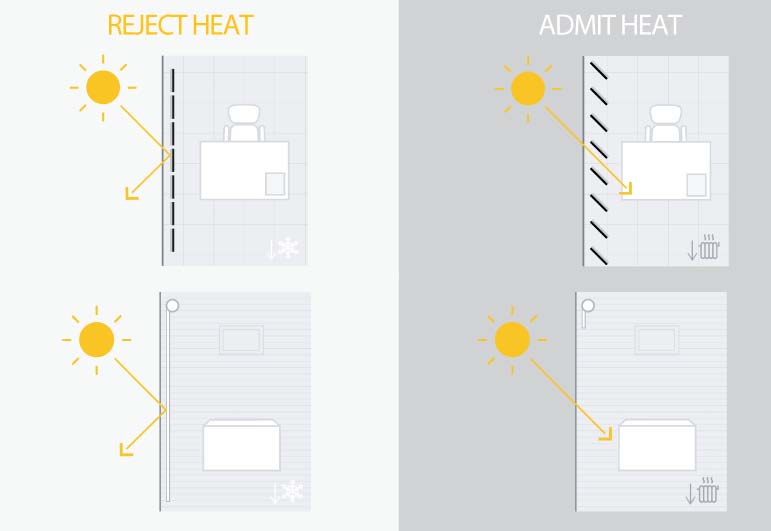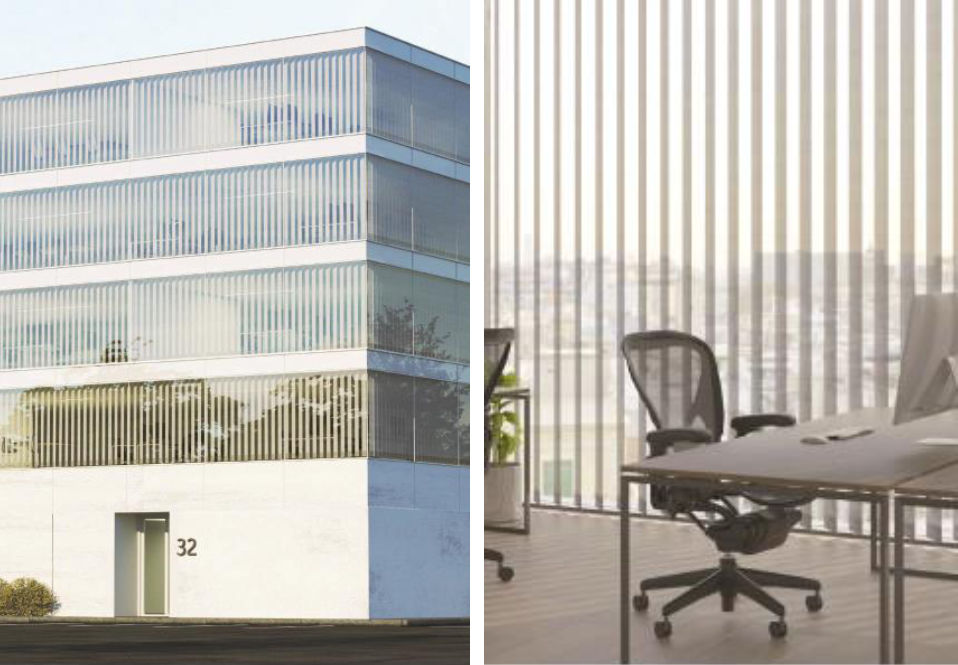By Samuel de Vries, Roel Loonen, Eindhoven University of Technology, The Netherlands and Sam Kin, Kindow, The Netherlands
Brief Concept Description
Kindow is a sun-tracking control and motorisation concept for automated indoor roller blinds and vertical blinds. The control concept seeks to balance the competing performance goals of preventing daylight glare, admitting daylight and views to the outdoor, and reducing energy consumption for heating, cooling and lighting.
Kindow utilises metalised shading fabrics which have a very high solar reflectance and allow for low solar heat gains, even though the system is positioned on the inside of the glazing.
The system is operated in relation to the position of the sun, indoor daylight conditions, occupancy, indoor heating/cooling demand, and user preferences. During occupied hours, the system prioritises visual comfort by automatically adjusting the blinds or shades in response to sun position, thereby preventing occupants from perceiving glare from direct sunlight whilst admitting diffuse daylight and views to the outdoors. Under overcast conditions, or when the sun is not in view of the façade, the system fully opens. During unoccupied hours, the control strategy seeks to reduce the energy consumption by admitting and reflecting solar radiation depending on whether solar gains are desirable or not. The operation of the system is shown in Figure 61 and Figure 62.
The Kindow solar shading solutions are developed by the company Kindow B.V. in the Netherlands in close collaboration with Eindhoven University of Technology. The system is currently available on the market and is being continiously improved for both existing and new customers.

Figure 61. Kindow sun-tracking control concept. The illustration shows the operation during occupied hours.

Figure 62. Kindow sun-tracking control concept. The illustration shows the operation during unoccupied hours.
Architectural and Technological Integration into the Envelope
The Kindow shading system can be wired for power supply and communications, but is additionally designed for completely wireless and stand-alone operation. In its stand-alone application, the motorisation system is powered by a PV and battery system which is integrated into the product on the inside of the facade. The control system can be integrated within a larger building automation system but full integration is not required for its operation.
The system, and the employed sensor strategy, is designed in a modular way where the shading system can be controlled in groups. This allows for customized control behaviour for different spaces and façade orientations. The Kindow automation concept can be combined with virtually any type of rollerblind or vertical blinds.
Integration into the Building: System and Comfort
The Kindow system prevents daylight glare discomfort and offers more effective daylight utilisation and views to the outdoors. By preventing the occupant from being exposed to direct solar radiation, the system also helps to prevent thermal discomfort from radiant asymmetry. Compared to conventional automation strategies for rollerblinds, which fully lower or raise the rollerblind in response to an external sensor, the Kindow system offers significant reductions in energy consumption for heating, cooling and lighting. The system allows control parameters to be adjusted to user preferences and the system can be manually retracted. Simulation studies have suggested though that user overrides are less likely to occur compared to a conventional automated control strategy. In comparison to conventional automated control strategies, the Kindow concept is associated with higher solar gains. Compared to a conventional control strategy for indoor rollerblinds, the Kindow system still leads to a reduction in cooling energy consumption as the increase in solar gains is offset by a reduction in heat gains from artificial lighting. In comparison to an automated outdoor solar shading system, the Kindow strategy is associated with a higher cooling energy consumption. This increase in cooling energy consumption is outweighed, however, by reductions in artificial lighting and heating energy consumption in a way that the Kindow system offers more beneficial overall energy performances in terms of final- as well a primary energy consumption.
Lessons Learned

Figure 63. Kindow vertical blind system. Exterior and interior appearance.
- Advanced solar shading control offers a very cost-effective way of improving indoor environmental comfort and reducing building energy consumption.
- The effects on the indoor environment of solar shading control combined with daylight-driven control of artificial lighting rely on interactions between the thermal and the visual domains of physics. These domains are traditionally adressed seperately within building performance simulation tools. Overcomming this limitation requires specialist knowledge.
- The performance benefits of indoor shading solutions and interactions between artificial lighting and shading systems are not fully recognized by practitioners in the building industry. Solar shading, and especially indoor shading, is often considered to be part of interior furnishing and not as an integral part of the building envelope design. Solar shading specialists are ususally not involved in the early design process and, as a result, the benefits of solar shading are often overlooked.
- There is split incentive between developing parties and end-users which can prevent the potential of solar shading concepts from being realized.
Further Reading
Vries de, S.B., R.C.G.M. Loonen, et al. (2019). Sensor selection and control strategy development support for automated solar shading systems using building performance simulation. Building simulation 2019. Rome.
Woensel van, R. (2018). Automated solar shading and occupant behavior - The impact of occupant behavior modeling on the simulation-based performance prediction of automated solar shading systems. Masters thesis, Eindhoven University of Technology.
Company website